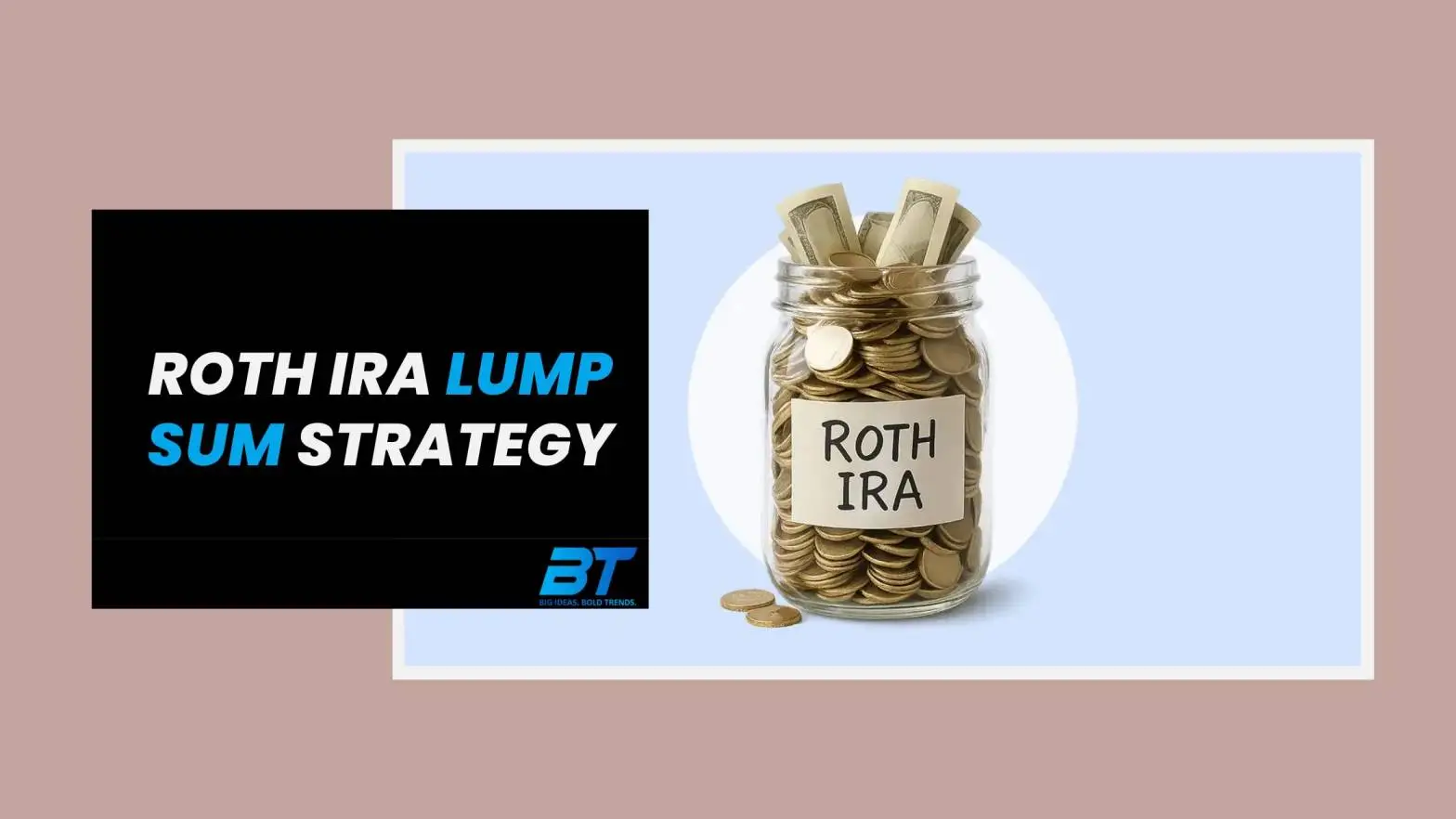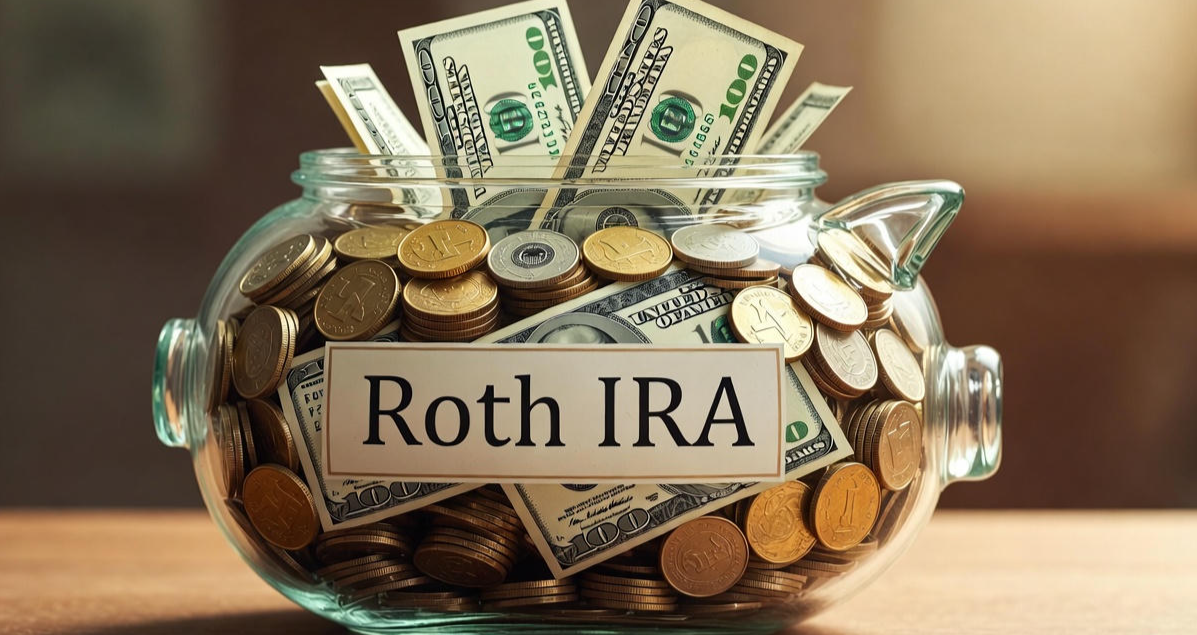
I utilized to think contributing a enormous chunk of cash all at once was super complicated, like a mystery handshake as it were Divider Road folks knew. Truly, the to begin with time I attempted this, I was totally misplaced. But at that point I realized that contributing a knot entirety Roth IRA venture is fundamentally fair like choosing to eat a entire pizza right presently instep of one cut each day for a week.
Both ways get you the pizza. But which way is best?
My neighbor, Sarah, was trying to do this last week. She got a bonus check from work, and it was a nice amount—a big stack of cash. She knew she wanted to put it in her Roth IRA because those accounts are awesome for growing your money tax-free. But she ran into a funny problem: Should she put all the money in today (that's the "lump sum" part), or should she spread it out over the next few months?
If you’re sitting on a good amount of savings, maybe from a bonus, an inheritance, or just saving up for a long time, you might be asking the same thing. You know a Roth IRA is a great place for it, but the big question is about timing. It's about knowing the best way to invest lump sum in Roth IRA.
Let’s be honest. This part still blows my mind a little. We're going to break down this big decision so you can feel totally confident in what you do next.
What is a Roth IRA, Anyway? (The Simple Version)

Before we talk about dropping a whole pile of cash into it, let's make sure we know what a Roth IRA is.
Think of it like a super-secret savings jar that the government agrees to leave alone.
When you put money into a normal savings account, you pay taxes on that money before it goes in. And then, when you take the money out later, you might pay taxes on the money it earned.
A Roth IRA is different. You put money in that you’ve already paid taxes on (that's key). But then, that money grows and grows over many, many years, and when you take it out when you’re older (usually after age 59 $\frac{1}{2}$), the government says, "Go ahead. We don't want any taxes on the money it earned."
That’s huge. It means all the growth—all the extra money your money made—is 100% yours, tax-free. That's why making a Roth IRA lump sum contribution is so popular when people have extra money sitting around.
But Wait, There’s a Rule! The Contribution Limit
You can’t just put as much money as you want into a Roth IRA. The government sets a limit, called the annual contribution limit.
-
For case, in 2024, the constrain is $$7,000$ (or $$8,000$ if you're 50 or older).
That implies the most you can put in for the entirety year, no matter how wealthy you are, is that sum.
This rule is a big deal when you’re talking about investing lump sum Roth IRA. A lump sum is almost always the full limit for the year, put in all at once.
Lump Sum Investing vs. The Slow-and-Steady Way

Okay, let’s get back to Sarah and her bonus check. She has $\$7,000$ and wants to put it in her Roth IRA. She has two main choices for this lump sum Roth IRA investment:
Choice 1: The Lump Sum Attack
This means putting the full $\$7,000$ into the account right now, today.
-
Pros: All your money gets to work right away. If the stock showcase goes up following week, all $$7,000$ of your cash goes up with it. The more time your cash spends in the advertise, the more time it has to develop.
-
Cons: What if the stock market goes down tomorrow? Then you bought at a bad time, and your whole investment would drop right away. That can feel crummy.
Choice 2: Dollar-Cost Averaging (DCA)
This means taking the $\$7,000$ and splitting it up. Maybe she puts in $\$583$ every month for 12 months. This is called Dollar-Cost Averaging (DCA).
-
Pros: You don't have to worry as much about the market dropping. You buy when prices are high, and you buy when prices are low. Over time, your cost averages out. It takes the guesswork and the stress out of it.
-
Cons: You have some money sitting in a low-interest savings account for months, instead of letting it earn tax-free growth in the Roth IRA. If the market generally goes up during those 12 months (which it usually does over long periods), you'll have missed out on some of that growth.
Should I Lump Sum My Roth IRA? What the Research Says
This is where the rubber meets the road. What do smart money people say is the best thing to do?
Research on this topic is actually pretty clear. Most of the time, historically, putting the money in right away—the lump sum approach—has been the better choice.
Why? Because the stock market tends to go up more often than it goes down. It might go up and down like a rollercoaster day to day, but if you look at a big graph over 10 or 20 years, it’s mostly going up.
When you hold money back, waiting for a "better time" to buy, you are taking a risk that you’ll miss out on a period of growth. The money you hold onto isn't doing anything important. It's just sitting there.
Simply put: Time in the market beats timing the market.
If you have the full amount ready, a lump sum Roth IRA investment gives your money the absolute longest time to grow, and that extra time is what makes all the difference when you're talking about a super-long goal like retirement.
But What About My Feelings?

I get it. It’s scary to put in a lot of money and then watch it drop. This is the only real reason many people choose DCA. It feels safer.
-
If you know you would panic-sell if your investment dropped 10% right after you put it all in, maybe DCA is a better choice for you. Your mental well-being is worth something, too.
-
But if you can put the money in, walk away, and not check the balance for six months, then the lump sum approach will likely make you more money in the long run.
Think about it like this: If you have the money, why wait? The Roth IRA is waiting for it.
After the Lump Sum: What to Actually Invest In
Once your Roth IRA lump sum contribution is in the account, you have to decide what to buy with it. A Roth IRA is just the type of account (like a box); you still have to put things inside the box.
Most people use their Roth IRA to buy:
-
Mutual Funds: These are like a big basket of stocks and bonds that a professional manager runs. You buy a piece of the basket.
-
ETFs (Exchange-Traded Reserves): These are exceptionally comparative to common stores, but they exchange like a stock. A prevalent kind of ETF is one that fair tracks the entirety U.S. stock showcase. You're buying a tiny piece of hundreds of major companies all at once. This is a very simple and smart way to build your investment portfolio. I’d suggest checking out our guide to Index Funds: Essential Guide for Every Investor if you want to know more about this idea.
For most people, especially if you're young, putting the entire lump sum into a broad, low-cost Index Fund (which is a type of ETF or Mutual Fund) is the smart move. You buy the whole market and let it do its thing.
Two Scenarios: Putting the Strategy to Work
Let’s look at two simple situations to show this in action.
Scenario 1: The Max Contributor
You are 35 years old and you want to fully fund your Roth IRA for the year. You have the full $\$7,000$ sitting in your regular bank account.
-
Action: You open your brokerage account and transfer the full $\$7,000$ to your Roth IRA today. You then immediately buy an S&P 500 Index Fund with the whole amount.
-
Result: All $\$7,000$ is now in the market, working for you, tax-free. If the market goes up 10% this year, you earn 10% on the entire $\$7,000$.
Scenario 2: The Hesitant Starter
You are 35 years old and have the full $\$7,000$, but you're worried about the market dropping.
-
Action: You decide to do DCA. You keep the $\$7,000$ in your bank account and plan to move $\$583$ into the Roth IRA on the first of every month.
-
Result: By the end of the year, all $\$7,000$ is in. But let's say the market went up 10% during that year. Only a small part of your money was able to benefit from that 10% gain for the whole year. A bigger part of your money only saw a small portion of that growth because it was stuck in the bank waiting. You missed out on potential growth simply because you waited.
Which choice looks like the smarter move? Pretty cool, right?
The key fact to remember is that the market goes up over time. If you have a huge heap of cash and the capacity to put it in, do it. The best day to plant a tree was 20 a long time back. The second-best day is today. That applies to your lump sum Roth IRA investment, too.
Questions People Ask About Investing a Lump Sum
I made too much money this year. Can I still use the Roth IRA?
That’s a great question. The government says if you earn more than a certain amount of money, you can't put money directly into a Roth IRA. But you can still get the money in there! It’s called the "Backdoor Roth" method, which is a common trick. You would put the money in a Traditional IRA first, and then immediately move it to the Roth IRA. It's a bit of a trick, but it works and many people do it. The IRS has rules about this, which you can see on their website.
What if I put in a lump sum, but I need the money back soon?
A Roth IRA is for money you don't plan to touch for a very long time—like 20 or 30 years. However, here's a neat trick: You can always take out the money you contributed (the original lump sum amount) at any time, for any reason, without penalty or taxes. But you can't take out the money it earned. If you think you might need the money, you probably shouldn’t use it for a lump sum Roth IRA investment. Maybe check out our guide on the Credit One Bank Settlement: How to File a Claim and Get Paid for money you might need sooner.
Should I use my lump sum to buy stocks or a mutual fund?
If you don't know much about investing, you should always go with a broad mutual fund or ETF. A broad fund is a safer place for your investing lump sum Roth IRA because it holds hundreds of different companies. If one company fails, it barely hurts your total investment. Buying one or two stocks is much riskier, like putting all your eggs in one fragile basket. A broad fund is the simple, proven way to go.
Is there a better month to make my lump sum contribution?
No, not really. People often wait until the end of the year in December or the tax deadline in April, but that’s not a smart strategy. If you have the money today and it fits the annual contribution limit, put it in today. Any month is better than waiting.
What if I don't have the full $\$7,000$ lump sum?
That is totally fine! The annual contribution limit is the most you can put in. You can put in as little as $\$5$ or $\$10$ if you want. If you only have $\$1,000$ to start with, put that $\$1,000$ in as your Roth IRA lump sum investment. Then, you can use DCA for the rest of the year, putting in a little bit every month until you reach the limit.
Is a Roth IRA the only good option for a lump sum?
No, there are other great places for a lump sum, especially if you have an employer 401(k). That account lets you put in a lot more money each year. But a Roth IRA is a fantastic choice because of the tax-free growth. For most people, a good financial plan includes using both the Roth IRA and the 401(k).
If you have a large amount of money sitting around, the science and the history point to one thing: don't wait. Get that money into your Roth IRA today, and buy something simple like a broad Index Fund. That big check is a massive opportunity, and the key is to give that money the most time possible to grow, tax-free.
The next time you see a commercial talking about "waiting for the right time to invest," you'll know exactly what's going on—it's usually a bad idea. Go open your account and give it a try this weekend!





